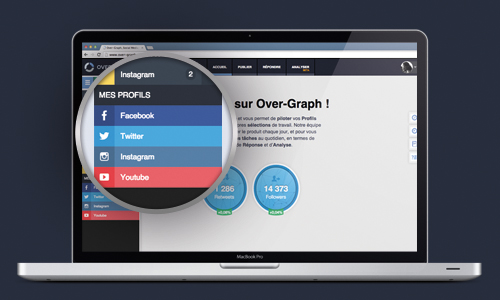As long as we surf on The Internet, we encounter, all of us and more and more often, those mysterious APIs (Application Programming Interface). They are thousands, public or private. What are they? What is their purpose?
Maybe you’re using, in addition of Over-Graph, social networks managing tools very specific like Twitter Audit (to identify fake followers) or Topsy (Twitter’s stats of hashtags, mentions,etc..). All those tools are based, in majority, on APIs offered by social media (Facebook, Twitter, Google,…).
For example, Google offer, by it-only-self, more than 110 APIs, like de Youtube one or the Google Maps.
What are they?
APIs are bridges which allow websites or apps to communicate with each other and exchange data. So, websites called suppliers allow to others websites named “consumer” to have access to those data and information.
The last ones, like Over-Graph, are dependent, mostly, to the suppliers (Twitter, Facebook and Google, for OG).
It is not uncommon that some Social networks’ features are not integrated in APIs, the news one as the basics. “Consumers” websites, especially their developers, have to wait for the features to be available on the APIs.
For example, features as Pinterest publication or personal Google Plus profiles are not available with APIs yet. That why you will not see them on Over-Graph, or an other “consumer” websites.
“Supplier” websites define rules and process to give access to their information. They offer to developers some tutorials and guidelines to accompany them is the use and exploitation of APIs. Language and format mostly use are REST, JSON and XML.
APIs’ potential is colossal and their use almost infinite. You should understand, quickly with some examples, how much APIs are powerful and limitless.
Do you want to integrate a map of your shops on your website? Your answer maybe awaits in Google Maps, Bing or ViaMichellin’s APIs.
Likewise TripAdvisor who possess it own APIs. This one is private. Meaning that only certificated partners have access to the different elements contain in TripAdvisor’s APIs: travelers pictures, reviews and scoring. In February 2013, the traveling website announced that 300 millions netizens will have access to TripAdvisor content via partners websites.
This is the case of Accorhotel, which suggest, directly on its website, the comments and reviews of “TripAdvisers”on a hotel.
If APIs aim at developers and webmaster, knowing their existence and how numerous they are is essential. Do not ignore them. They are all over web and mobile apps.
As a conclusion, AXA Banque’s website sum ups perfectly the API’s interest : “APIs create ecosystems encouraging Web applications creation in addition to base offer of large digital players.”
Damien Le Fur


